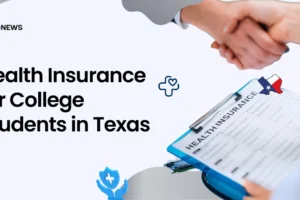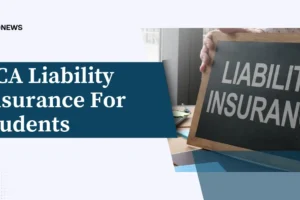Are you student and looking for Car Insurance Discounts for Students? then you are on the right article. The cost of car insurance is almost usually higher for teens and young drivers than for more seasoned drivers. However, there are methods to reduce the cost of your auto insurance policy, and one of the simplest ways to do so is to take advantage of good student discounts.
Table of Contents
Young drivers’ car insurance rates are typically higher because of their inexperience driving. Thankfully, a lot of car insurance providers provide methods for college students to lower their car insurance costs, such as insurance discounts.
In this blog, we have written down all the details that are related to car insurance for students.
Key Takeaways:
- Usually, car insurance is expensive for young drivers since it has been estimated that they are harsh drivers compared to other age groups.
- The average cost of car insurance for students is typically around $167 monthly or $2,008 annually.
- Good student discount is one of the best ways to get a car insurance discount for students.
- The qualifying requirements of a good students discount are determined by the insurers. This includes age range, educational background, and GPA.
- To be eligible for car discounts for students, the applicants should be under 25 years of age.
- The various car insurance discounts for students include good student discounts, distant student discounts, and teen driver discounts.
- State Farm, Geico, and USSA are some of the top car insurance companies that provide massive discounts for students.
Why is car insurance so expensive for young drivers?
Younger drivers with less driving experience typically have higher car insurance costs. The Insurance Institute for Highway Safety (IIHS) reports that drivers between the ages of 16 and 19 had almost three times the fatal crash rate of drivers who were 20 years of age or older.
Because they are aware of this, car insurance frequently classifies young drivers as high-risk drivers. New driver car insurance is priced accordingly, with the greatest rates occurring between the ages of sixteen and seventeen. Car insurance for 18-year-old college students is estimated to be the most expensive among all age groups.
What are the average car insurance rates for students?
The average premium cost for a full-coverage auto insurance policy is broken down by age. The average cost for individuals between the ages of 16 and 25 is significantly more than the $167 monthly or $2,008 annual full-coverage plan that is the national average. The 35-year-old driver profile represented in this national average estimate has a spotless driving record and a solid credit history.
How to get car insurance discounts for students?
A young driver’s car insurance policy discount for good grades is called a good student discount. Because teen drivers between the ages of 15 and 19 have the greatest accident rates of any age group, insurance companies often charge more to cover them.
On the other hand, insurance firms assume that young drivers who attend school responsibly would also likely be responsible drivers. They should pay lower insurance rates because they are less likely to file claims on their auto insurance than teenagers with bad grades.
How do good student discounts work?
Your vehicle insurance policy guards against theft, collision damage, and other unforeseen events. To maintain the validity of your policy, you must pay regular premiums. You can submit a claim in the event of an accident to help defray the cost of repairs and a new car.
Certain insurance providers provide a range of rate reductions depending on things like your participation in associations and past claims. A popular choice is a good student discount, which, if they fulfill certain standards, gives college and high school students a reduction on their premiums.
The qualifying requirements are determined by the insurers and include the student’s age range, educational background, minimum GPA, and any conditions that could disqualify them.
Teen drivers’ car insurance premiums are often higher than those for other age groups, so good student discounts and any other eligible rebates are a blessing for American parents and teenagers. This is because inexperienced drivers have a higher chance of being involved in collisions and breaking the law.
What is the eligibility criteria for car discounts for students?
Insurers that offer good student discounts set their own rules and requirements. However, the most common requirements include:
- Students must be under the age of 25 years
- Students should a full-time school or college student
- Students should maintain at least a “B” average or show a certain level of performance on standardized tests like SAT or ACT.
Usually, to be eligible for or to keep getting a good student discount, you must present documentation of your academic standing. For example, the insurance provider might ask for a report card or a transcript from the school, but they might also accept alternate documentation from homeschooled children.
Ways to attain car insurance discounts for students other than good student6 discounts:
Although a solid student discount is beneficial, careful driving is the best method for young drivers to maintain low insurance rates, according to insurers. Young drivers can also save money by being joined to a parent’s insurance instead of getting their own, thanks to the multi-car discount.
If you raise your deductible, finish your driver’s ed, or give up your car to attend college, you might be eligible for further savings.
You may also research graduated driver licensing programs, which offer extended practice sessions, restrict newly licensed drivers’ ability to drive in hazardous situations, and demand more parental involvement when their teenagers begin to drive.
All states have access to GDL systems, which may help lower the number of crashes overall and among 16-year-olds who die in them, according to research.
What are the various car insurance discounts for students?
Students who attend school away from home, keep good grades or drive while still a teenager are eligible for discounts from many auto insurance companies. You must be insured on someone else’s or your parent’s auto insurance policy to be eligible for these reductions.
1. Good student discount:
Full-time students under 23 who have a B average or above are eligible for a discount. The average discount in most states is ten percent.
2. Distant student discount:
With certain auto insurance policies, you can receive a discount if you’re under 22 years old, attend a school that’s at least 100 miles away from your home and don’t have a car on campus.
3. Teen driver discount:
This is available to those who are eighteen years of age or younger.
Top car insurance discounts for students:
1. State Farm:
Because of its solid reputation, affordable prices, a wide range of coverage options, and attentive customer support, State Farm performed highly in our thorough evaluation.
If student drivers retain strong grades, it offers a hefty good student discount with savings of up to 25%. This is a longer qualifying period than many other auto insurers, allowing students to apply until they turn 25.
Additionally, kids who are homeschooled and who scored in the top 20% of test takers on specific national standardized examinations within the last 12 months are eligible for this discount.
To be eligible for the State Farm good student discount, both traditional and homeschooled students must provide documentation of their test results or grades.
| Age | State Farm Average Annual Rate |
| 16 | $5,514 |
| 17 | $3,714 |
| 18 | $3,340 |
| 19 | $2,924 |
| 21 | $2,322 |
| 25 | $1,952 |
2. Geico:

Because Geico offers a range of clients consistently cheap prices, it is an affordable option for most drivers. In order to be eligible for a good student discount, full-time high school or college students must maintain a minimum grade of B in their classes. An excellent student discount of up to 15% off your prospective auto insurance premium is available with Geico’s service.
Geico’s website makes no mention of attractive student discounts in relation to homeschooling. Students who are homeschooled should speak with a Geico representative directly to find out if they are eligible for the same good student discount as regular students.
| Age | Geico Average Annual Rate |
| 16 | $5,307 |
| 17 | $3,646 |
| 18 | $3,161 |
| 19 | $2,485 |
| 21 | $1,844 |
| 25 | $1,807 |
3. USAA:

Only active military personnel, veterans, and their families are eligible for coverage with USAA, which has some of the lowest auto insurance prices available. Think about the USAA excellent student discount if you’re a student with a parent in the military or if you’re a military member yourself.
Please take note that USAA members in Hawaii and North Carolina are not eligible for this exceptional student discount.
To be eligible for the USA to qualify for a decent student discount, you have to be enrolled full-time in a technical institution, high school, or college.
| Age | USSA Average Annual Rate |
| 16 | $6,431 |
| 17 | $3,398 |
| 18 | $2,897 |
| 19 | $2,261 |
| 21 | $1,609 |
| 25 | $1,825 |
What are some options of car insurance discounts for medical students?
One method that young drivers can use to lower their car insurance costs is by taking advantage of the good student discount. There are many more student car insurance discounts available that can result in even bigger savings.
Other discounts on car insurance that may be available to students include as follows:
1. Discount for driver’s education:
If a student driver enrolls in an authorized driver’s education or driver training program, certain auto insurance companies will provide them a discount.
2. Discount for defensive driving courses:
Completing a defensive driving course may entitle many policyholders to further discounts.
3. Student away at school discount:
You may qualify for an additional discount if you’re a college student who rarely drives and lives away from home.
4. Multi-car discount:
You can save more money if you are a student driver and you share your policy with someone else, such as a parent.
5. Discount for car safety features:
Students may be eligible for additional discounts if they drive a vehicle equipped with anti-theft or airbag systems.
6. Usage-based insurance:
Students who refrain from driving recklessly, such as speeding, applying forceful braking, or driving after midnight, are rewarded via telematics insurance apps.
While it’s uncommon for young drivers to obtain incredibly cheap car insurance, if you take advantage of one or more of these options and combine them with a solid student discount, your premium costs could go down significantly.
What are some other ways students can save money on car insurance?
In addition to reductions on auto insurance, there are a few more ways to further minimize the costs you’ll pay for coverage as a student driver. Below, we’ll go over a handful of them.
1. Continue to Have a Spotless Driving Record:
Being a careful driver is the simplest approach to obtain a cheap auto insurance policy. You can be eligible for a safe driver discount in addition to having your rates drop more quickly than those of other adolescent drivers. This entails abstaining from risky behaviors including texting and driving, speeding, and late-night driving.
2. Raise the Deductible for Your Insurance:
Higher auto insurance deductibles mean that drivers must fork out more cash before their insurer will pay for any more damages to their car. On the other hand, the monthly premium for these policyholders’ insurance coverage plan will also be cheaper.
3. Plans for Bundled Insurance Coverage:
By combining your homeowners’ or renters’ insurance with your auto insurance, you may be able to save a significant sum of money. If you pay for these coverages jointly, you should anticipate a significantly lower premium than if you pay for them separately.
4. Seek out discounts for driver affiliation:
Members of specific fraternities and sororities can receive discounts from a number of auto insurance providers. For this reason, if you’re a member, it’s worth seeing if you qualify for discounted pricing.
Frequently Asked Questions
1. What is the cheapest car insurance for college students?
USAA offers the most affordable auto insurance for students, but only if they are enrolled at a military school. The least expensive insurance provider is Geico, which charges an average of $3,161 annually for 18-year-olds if they are not eligible for USAA coverage.
2. What type of students get the cheapest car insurance?
An approximate annual mileage is always requested by insurers in order to determine premiums. Low-mileage drivers are thought to pose less of a risk because they spend less time driving. Therefore, you may be able to obtain less expensive insurance if you plan to use your car simply while visiting family for the holidays and won’t be driving a lot.
3. What type of car insurance is the cheapest?
Completely comprehensive insurance is usually the least expensive, though specific situations can affect costs.
4. How much is a typical car discount for students?
Good student discounts can save you anywhere from 10% to 25% off your regular premium with several insurers. However, the final savings offered by each insurance varies, and variables like your GPA may have an impact.
5. What GPA is needed for a good student discount?
For a driver to qualify for an excellent student discount, most insurers need a B average or higher, or a 3.0 GPA. To find out if you qualify for this discount, we advise contacting your particular auto insurer.
Conclusion:
One option for young drivers and their parents to save money on auto insurance is by taking advantage of a good student discount. The young driver must fulfill the requirements for eligibility, which include age, student status, and academic standing, to keep the discount.
Even though teen and young driver vehicle insurance is usually expensive, you may be able to save money on your premiums if you take advantage of a good student discount. It is wise to evaluate quotations for auto insurance from a number of reliable providers to see which ones provide the best values and savings.












Add Comment